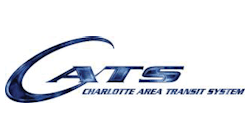Finding ways to solve the first and last mile connectivity challenge is key to our ability as an industry to expand our ridership base. The Charlotte Area Transit System (CATS) is in the process of developing a partnership model with ride sourcing services to provide not only first-last mile connections but also to expand our mobility offerings.
Before we can determine how to best form this partnership, we believe it is important to analyze our current operating environment and our customers’ needs.
At the 2016 APTA Bus and Paratransit Conference, John Martin, CEO and President of the Southeastern Institute of Research, described the evolution of a new economic development model. The model states to first create a community where people realize a high quality of life. Those communities then attract new residents/talent and then business follows the talent. Cities that grasp this model will be at the forefront of the new economy.
In Charlotte, we are striving to make investments in our transit infrastructure to support a thriving and growing city. We must evolve our system to meet the diverse needs of many generations: Baby Boomers who are downsizing and relocating into our urban centers, along with Millennials that want to live, work, and play within their community.
In our system’s evolution we must ensure that we’re able to provide mobility options to transit-dependent people who find themselves priced out of the urban core where transit services are most prevalent.
So, what is a possible solution? Partnering with ride-sourcing companies. We’ve seen successful partnerships at transit agencies like PSTA, DART and MARTA that we can learn from. Each community has its own specific needs and challenges so there is no one-size fits all model. For CATS, we want to maximize the efficiency of our system and concentrate our limited fleet resources along corridors that we can move large numbers of people with high frequency service. By partnering with ride sourcing entities we can expand the reach and access to our services in a cost effective manner.
As we move forward in developing our model for partnership opportunities, we have to find a solution to the digital divide that exists for so many of our transit-dependent riders. An estimated 10 percent of American families do not have a relationship with a banking institution and 20 percent do not have access to a credit card. Despite the wide spread proliferation of smart phone technology there is still the question: how will some customers pay for these new mobility options?
In analyzing how CATS will implement a first-last mile partnership, we can certainly say that the opportunities far outweigh the challenges. At the end of the day, transit agencies aim to provide citizens with viable transportation options that fit into and enhance their daily lives. If we need to find creative ways to do that, then we will.
John Lewis, CEO and Executive Director, Charlotte Area Transit System, Charlotte, NC.




